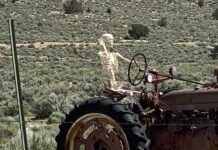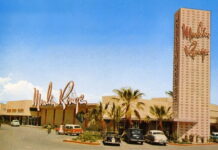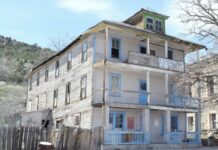Five Ways to Experience the Mojave Desert in Pahrump
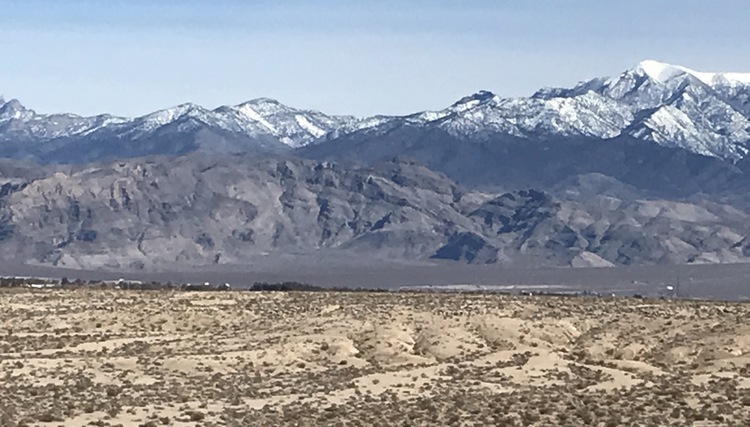 The great Mojave Desert surrounds the town of Pahrump Valley, and it is a shame to visit the valley without experiencing the desert up close. With that in mind, I composed a list of places to visit around the Pahrump Valley to best experience the desert. The great thing about this list is everything on it is absolutely free.
The great Mojave Desert surrounds the town of Pahrump Valley, and it is a shame to visit the valley without experiencing the desert up close. With that in mind, I composed a list of places to visit around the Pahrump Valley to best experience the desert. The great thing about this list is everything on it is absolutely free.
The first stop on my top five places to visit is the Pahrump Valley Museum located at 401 E. Basin Road in the center of town. The museum is a great jumping off point for it can provide you with other places to go in the town of interest to you and your fellow travelers. The museum is free to enter and has collected a wide variety of artifacts from the history of Pahrump. There are self-guided and guided tours of exhibits. The museum traces the history of the Pahrump Valley from prehistoric times all the way to the present.
Of interest to many visitors to the museum are the buildings in the back. Unlike many towns in the west, there weren’t too many old buildings that survived and the ones that did were transported to the museum. All the buildings in this exhibit were moved from their original locations. There are a few old homes, a schoolhouse, and a general store, to name a few. All the buildings were used and some are even said to be haunted.
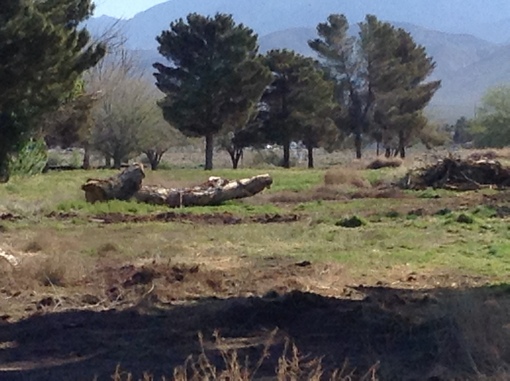
The second place on my list is for travelers that want to experience the desert is Discovery Park. The park is free to the public and is a favorite for birders. Birders love the nearly 200 species that come to the park, and it is a moderate walk.
The park was once an old golf course that went belly up in 2008. It is centrally located and is on Pahrump Valley Boulevard just about a quarter of a mile south of Highway 372. The park is owned by one of the water companies in Pahrump, Great Basin Water Company, which provides free recycled water to the park and has allowed the community to design the park. Within this man-made park, you will find an assortment of desert wildlife, from cottontails to coyotes and foxes and even water birds that populate the various ponds.
The vegetation is a mix of imported trees and native plants. The shade provided by 50-foot-tall cottonwoods, and Mondale Pines throughout the park shield visitors from the harmful rays of the sun. The trails that travel through the park will take you to lush water ponds, a butterfly garden, the start of an oak grove and pine grove, and plenty of birding opportunities.
Another interesting aspect of the park are some old power poles installed around the park. These were installed for the raptor population in the park that migrate through the park. There even have been some Bald Eagle sightings in the park.
The third place to visit on my list is one of my favorite places to hike and walk my dog, Carpenter Canyon Road. This area is part of the Spring Mountain Range. If you are lucky you might see a wild horse or burro. This place is a great way to get out of the car and see some great desert foliage and wildlife. If you go at the right time, as the sun is about to set, you might even see a rare glimpse of the Desert Tortoise. The road is to the east of Spring Mountain Motor Sports Ranch and right off Highway 160.

It is an intermediate hike if you start from the bottom near the Bureau of Land Management Fire Station. Another way to hike it is to take a good off-road vehicle and start hiking the upper part of the road about four miles past the Bureau of Land Management Fire Station.
The upper parts of the trail give you clean crisp vistas of the town. The hike is about seven to eight miles from the bottom. If you do this hike during the summer, the best time is the early morning before the heat. In the lower elevations, you will see the abundant Spanish Dagger or Yucca Schidigera. As the elevation increases to about the 4,000-foot elevation, you will experience a drop in temperature. You will also start to see more Joshua Trees, leaving behind the Yucca trees. As you get up to the 6,000-foot elevation you will start to see Pinyon Pines. Again, the views of the valley below are fantastic. Come during the spring and you will experience an abundance of desert flowers.
My fourth place to visit is the Nopah Wilderness Area, which can be accessed from Highway 372 and Barney Street. The wilderness area is composed of 106,623 acres. For access, I would use off-road vehicles and head south on any southbound trail. A good GPS system is needed to guide you, for the trails are not marked. You want to head in a southwesterly direction, heading for the dry lake bed. The BLM has clearly marked the dry lake bed as a wilderness area, and once you hit those markers you need to dismount and walk into the dry lake bed area or risk being fined by a BLM Ranger. This whole area is pretty much flat. The non-wilderness area is on the Pahrump, Nevada side, and the wilderness area is on the California side. The Pahrump side is a great area to explore via off-road vehicle.
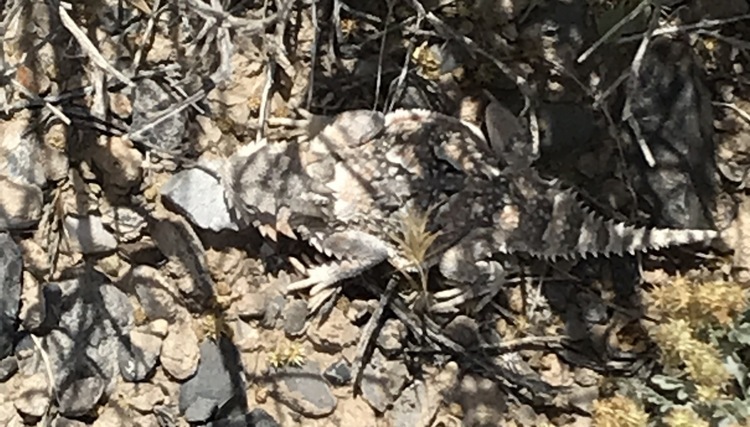
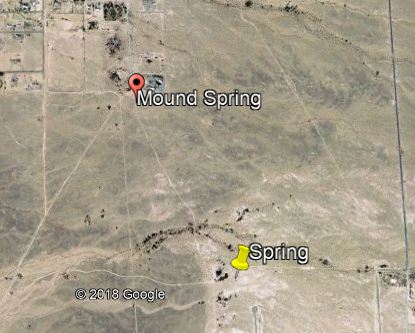
My last place to visit is Mound Springs. Mound Springs is located on the west end Pahrump wouldn’t be a place to visit if it were not for the plentiful aquifers in the valley The spring is a typical example of how farming got started in the middle of the desert, and it is still running. The spring was acquired by a conservancy with an interest in preserving the land. They have found Native-American pottery and the remains of later adobe structures there. You can look as much as you like, but any taking of artifacts is prohibited.
— Verrnon Hee



